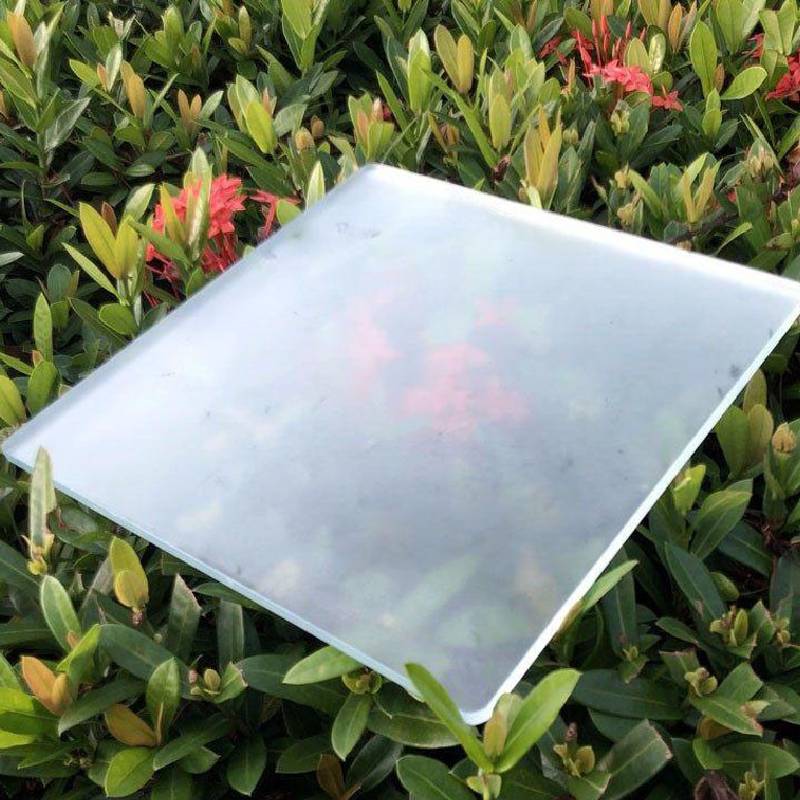The Significance of Annealed and Tempered Glass in Modern Architecture
Glass has been a fundamental element in architecture and construction for centuries, serving purposes ranging from aesthetic enhancement to structural integrity. Among the various types of glass used in buildings, annealed and tempered glass plays crucial roles, each possessing unique properties and applications that cater to different needs.
What is Annealed Glass?
Annealed glass is a type of glass that is slowly cooled after it has been heated to its forming temperature. This process, known as annealing, ensures that the internal stresses in the glass are minimized, resulting in a uniform thickness and surface quality. It is typically manufactured through a process that involves heating the glass to a temperature of approximately 1,000 degrees Fahrenheit, followed by a controlled cooling phase.
The main characteristic of annealed glass is its ease of fabrication. Since it can be cut, drilled, and shaped without significant risk of breakage, it is widely used in standard glass applications such as windows, mirrors, and display cases. However, while it is more affordable and versatile, it is also more prone to breaking compared to tempered glass, which limits its use in areas that require higher safety standards.
The Advantages of Tempered Glass
Tempered glass, on the other hand, undergoes a rigorous process that enhances its strength. After being formed, it is heated to about 1,400 degrees Fahrenheit and then rapidly cooled. This treatment increases its strength significantly, making it about five to six times stronger than annealed glass of the same thickness. As a result, tempered glass is less likely to break and, if it does shatter, it breaks into small, blunt pieces that reduce the risk of injury.
The distinctive properties of tempered glass make it ideal for environments where safety is paramount, such as shower doors, glass doors, and facades, as well as in high-traffic areas. Its ability to withstand higher thermal and mechanical stresses also allows it to be used in applications such as glass balustrades and skylights, ensuring both safety and aesthetic appeal.
annealed tempered glass
Applications in Modern Architecture
As contemporary architectural designs evolve, the demand for innovative materials that can offer both safety and design flexibility continues to rise. Annealed and tempered glass have each found their place in this narrative. Architects and designers appreciate annealed glass for its capabilities in artistic applications, including intricate glass installations and decorative façade work. Available in various tints, sizes, and thicknesses, annealed glass can be customized to fit almost any design concept.
Conversely, tempered glass has emerged as a staple in modern building practices, particularly in skyscrapers and commercial buildings where safety and structural integrity cannot be compromised. Its strength allows for larger expanses of uninterrupted glass, providing stunning views and natural light while maintaining security and durability.
Environmental Considerations
The use of glass in architecture also aligns with sustainable building practices. Both types of glass can be produced with high energy efficiency and can be recycled, making them environmentally friendly choices for modern constructions. The implementation of energy-efficient coatings and the integration of various glazing technologies can further enhance the thermal performance of both annealed and tempered glass, contributing to overall energy savings in buildings.
Conclusion
In conclusion, the integration of annealed and tempered glass in modern architecture is a testament to technological advances in materials science. While both types serve different purposes, they collectively enhance building aesthetics, safety, and sustainability. As architects and builders continue to push the boundaries of design, the versatility and functionality of these glass types will undoubtedly play a significant role in shaping the future of our built environment, creating spaces that are not only visually appealing but also safe and efficient.
 Afrikaans
Afrikaans  Albanian
Albanian  Amharic
Amharic  Arabic
Arabic  Armenian
Armenian  Azerbaijani
Azerbaijani  Basque
Basque  Belarusian
Belarusian  Bengali
Bengali  Bosnian
Bosnian  Bulgarian
Bulgarian  Catalan
Catalan  Cebuano
Cebuano  Corsican
Corsican  Croatian
Croatian  Czech
Czech  Danish
Danish  Dutch
Dutch  English
English  Esperanto
Esperanto  Estonian
Estonian  Finnish
Finnish  French
French  Frisian
Frisian  Galician
Galician  Georgian
Georgian  German
German  Greek
Greek  Gujarati
Gujarati  Haitian Creole
Haitian Creole  hausa
hausa  hawaiian
hawaiian  Hebrew
Hebrew  Hindi
Hindi  Miao
Miao  Hungarian
Hungarian  Icelandic
Icelandic  igbo
igbo  Indonesian
Indonesian  irish
irish  Italian
Italian  Japanese
Japanese  Javanese
Javanese  Kannada
Kannada  kazakh
kazakh  Khmer
Khmer  Rwandese
Rwandese  Korean
Korean  Kurdish
Kurdish  Kyrgyz
Kyrgyz  Lao
Lao  Latin
Latin  Latvian
Latvian  Lithuanian
Lithuanian  Luxembourgish
Luxembourgish  Macedonian
Macedonian  Malgashi
Malgashi  Malay
Malay  Malayalam
Malayalam  Maltese
Maltese  Maori
Maori  Marathi
Marathi  Mongolian
Mongolian  Myanmar
Myanmar  Nepali
Nepali  Norwegian
Norwegian  Norwegian
Norwegian  Occitan
Occitan  Pashto
Pashto  Persian
Persian  Polish
Polish  Portuguese
Portuguese  Punjabi
Punjabi  Romanian
Romanian  Russian
Russian  Samoan
Samoan  Scottish Gaelic
Scottish Gaelic  Serbian
Serbian  Sesotho
Sesotho  Shona
Shona  Sindhi
Sindhi  Sinhala
Sinhala  Slovak
Slovak  Slovenian
Slovenian  Somali
Somali  Spanish
Spanish  Sundanese
Sundanese  Swahili
Swahili  Swedish
Swedish  Tagalog
Tagalog  Tajik
Tajik  Tamil
Tamil  Tatar
Tatar  Telugu
Telugu  Thai
Thai  Turkish
Turkish  Turkmen
Turkmen  Ukrainian
Ukrainian  Urdu
Urdu  Uighur
Uighur  Uzbek
Uzbek  Vietnamese
Vietnamese  Welsh
Welsh  Bantu
Bantu  Yiddish
Yiddish  Yoruba
Yoruba  Zulu
Zulu 

